Albatrosses and condors are amazing birds, and both species are among the largest birds in the world. But which species of these birds can be seen in the US? What are the differences between them? And how do they compare? Read on to find out more.
What is an Albatross?
Albatross is the name given to birds within the Diomedeidae family of large seabirds. They range widely in the Southern Ocean and the North Pacific. Though they are now absent from the North Atlantic except for occasional vagrants, they are believed once to have thrived there.
The IUCN recognizes twenty-two species of albatrosses. Of these, twenty-one are listed as at some level of concern; two are critically endangered, seven are endangered, six are near threatened, and six are vulnerable.
These species are often divided into four genera: great albatrosses, mollymawks, North Pacific albatrosses, and sooty albatrosses.
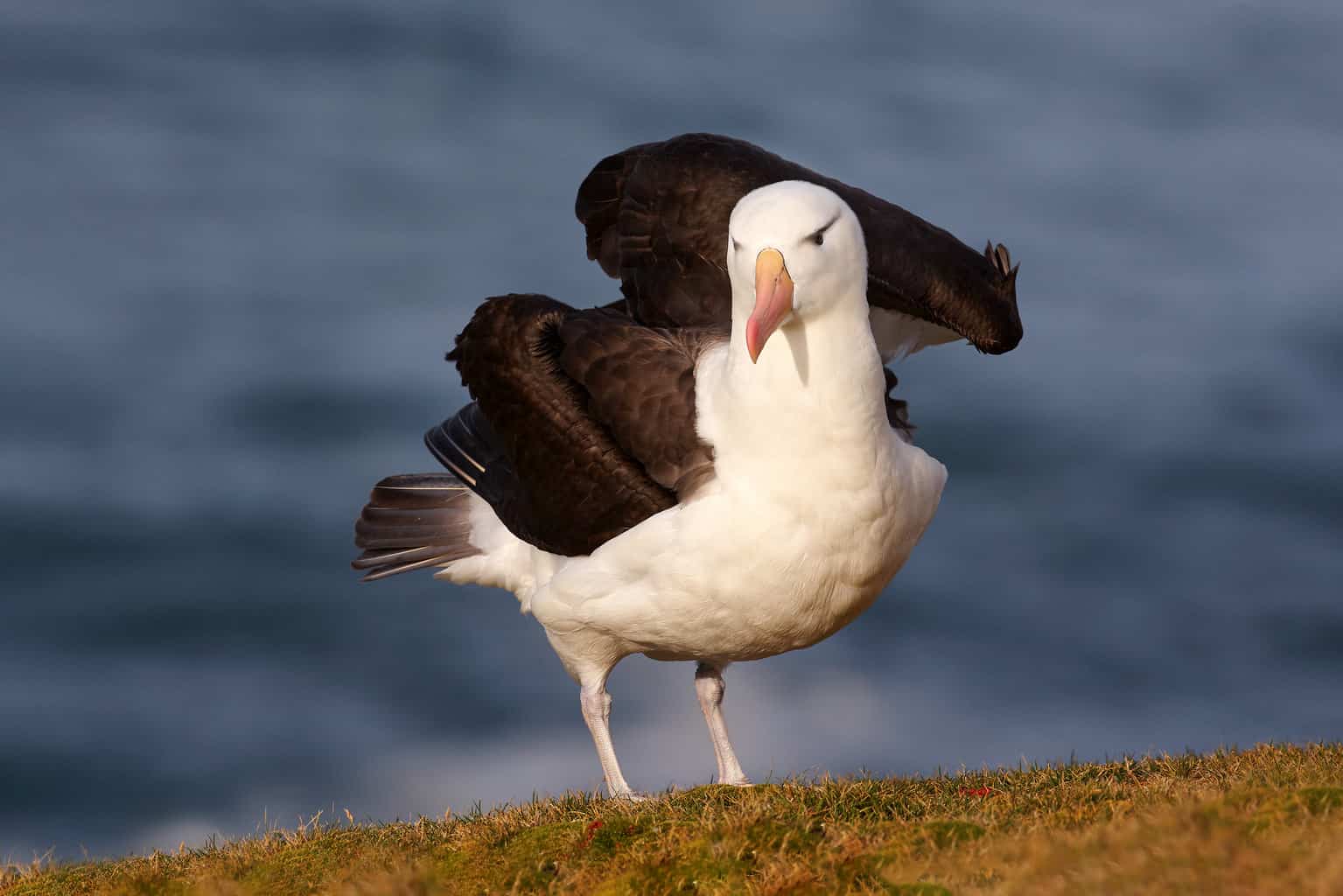
Most albatrosses range in the Southern Hemisphere from Antarctica to Australia, South Africa, and South America.
The exceptions to this are the four North Pacific albatrosses, of which three (the Laysan albatross, black-footed albatross, and waved albatross) occur exclusively in the North Pacific, from Hawaii to Japan, California, and Alaska. One, the waved albatross, breeds in the Galápagos Islands and feeds off the coast of South America.
What is a Condor?
Condors are two species of New World vultures: the Andean condor, Vultur gryphus, which lives in the Andes mountains, and the Californian condor, Gymnogyps californianus, which lives in the western coastal mountains of the United States and Mexico and the northern desert mountains of Arizona. Condors are part of the family Cathartidae.
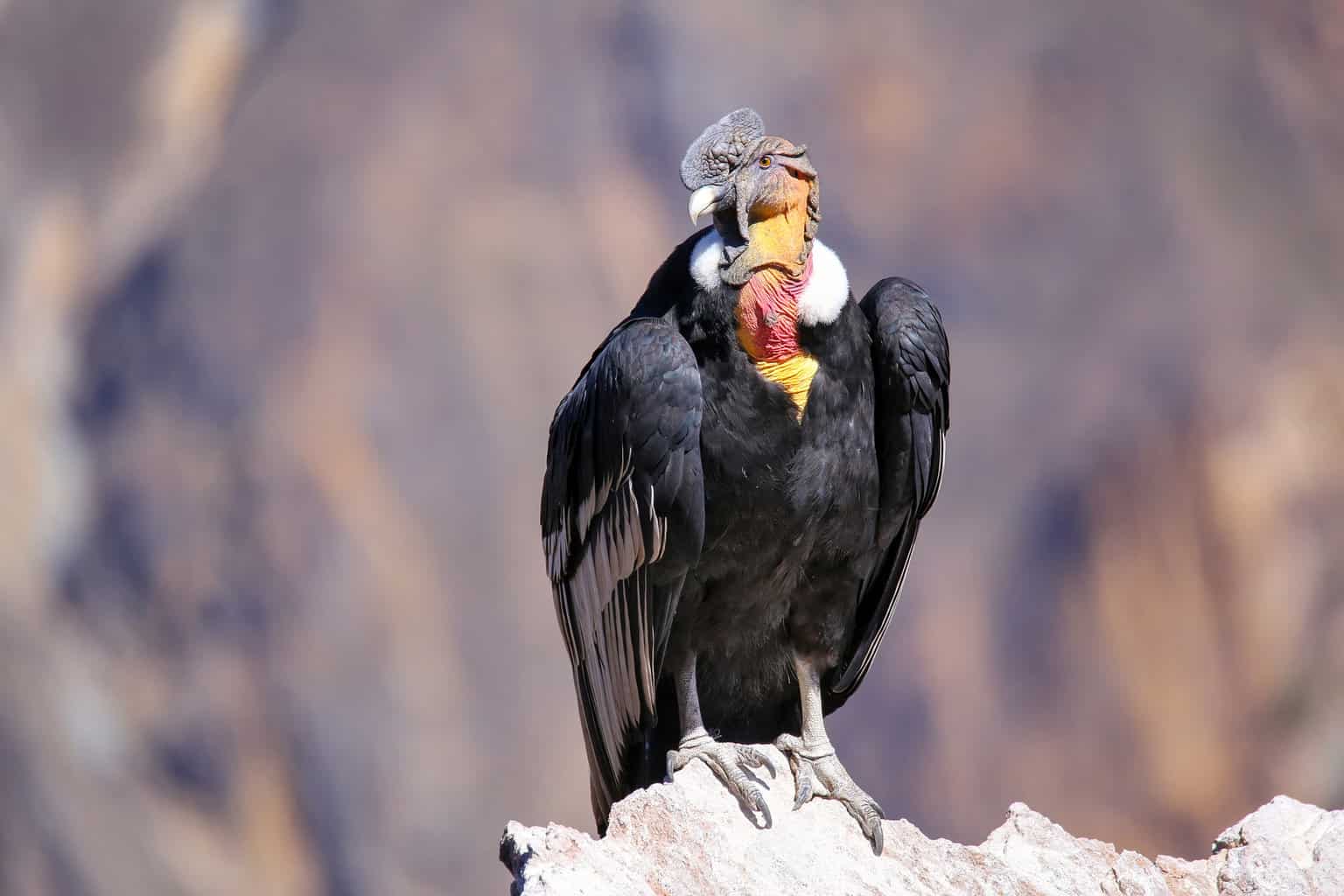
What are the Differences Between an Albatross and a Condor?
These birds are very different in appearance, ranges, habits, etc. But these two types of birds are often compared because they are among the world’s largest birds.
Where They Are Found
North Pacific Albatrosses
Laysan and black-footed albatrosses nest in the Northwestern Hawaiian Islands. Short-tailed albatross nest on sub-tropical islands south of Japan.
These are the species that can be seen in the United States, the first two on the Hawaiian islands and sometimes glimpsed off the Pacific coast, and the last off the coast of California. But it is important to note that albatrosses spend almost their whole lives at sea, only coming ashore to nest.
California Condors
The Californian condor can, as mentioned, also be seen in mountains along the Pacific coastline. But this is a land bird rather than one that spends most of its time at sea. And as mentioned above, this bird can also be seen in the northern mountains of Arizona.
Plumage & Appearance
North Pacific Albatrosses
The Laysan albatross has a blackish-gray upper wing, mantle, back, upper rump, and tail, and its head, lower rump, and underparts are white. It can be distinguished from the very rare short-tailed albatross by its all-dark back and smaller size. The Laysan albatross’s plumage has been compared to that of a gull, two-toned with a dark gray mantle and wings and a white underside and head.
The black-footed albatross is mostly dark all over, with almost black plumage. Some adults have white under-tail coverts, and adults have white markings around the eye and the base of the beak. Its beak and feet are also black.
The rare short-tailed albatross adult is white with black flight feathers, some coverts, and a black terminal bar on its tail. It has a yellow-stained nape and crown. Its bill is large and pink; however, older birds will gain a blue tip.
California Condors
The adult California condor is a uniform black except for large triangular patches or bands of white on the underside of its wings. It has gray legs and feet, an ivory-colored bill, a frill of black feathers surrounding the base of the neck, and brownish-red eyes.
A clear distinguishing characteristic of these birds is their almost bald heads and necks, with few feathers, which flush noticeably according to their emotional states. Spread feathers of this bird of prey fringe out at the ends of its impressive wingspan.
Size
North Pacific Albatrosses
Laysan albatross
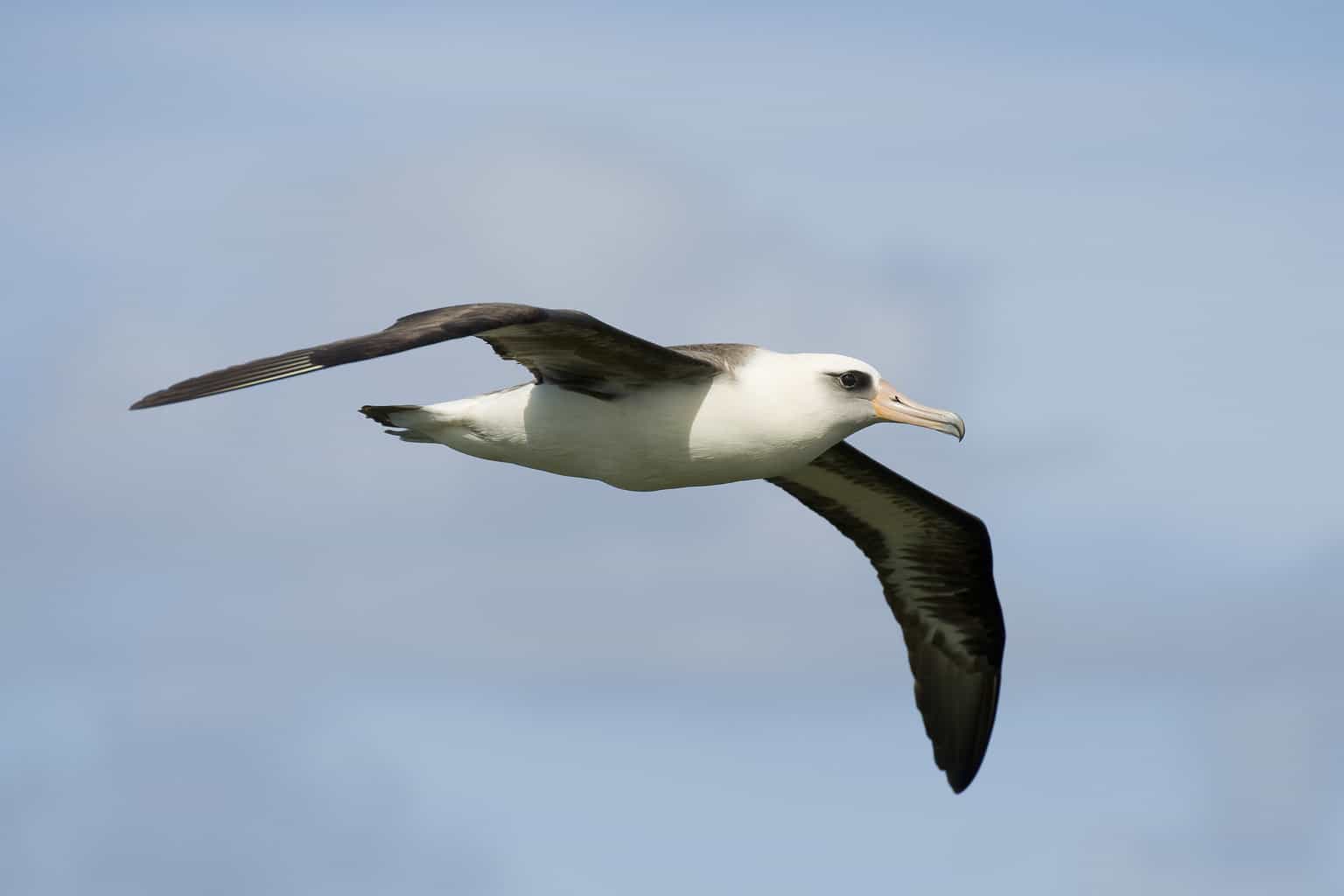
- Length: 81 centimeters (32 inches)
- Weight: 1.9 – 4.1kilograms (4.2 – 9 pounds)
- Wingspan: 195 – 203 centimeters (77 – 80 inches)
Black-footed albatross
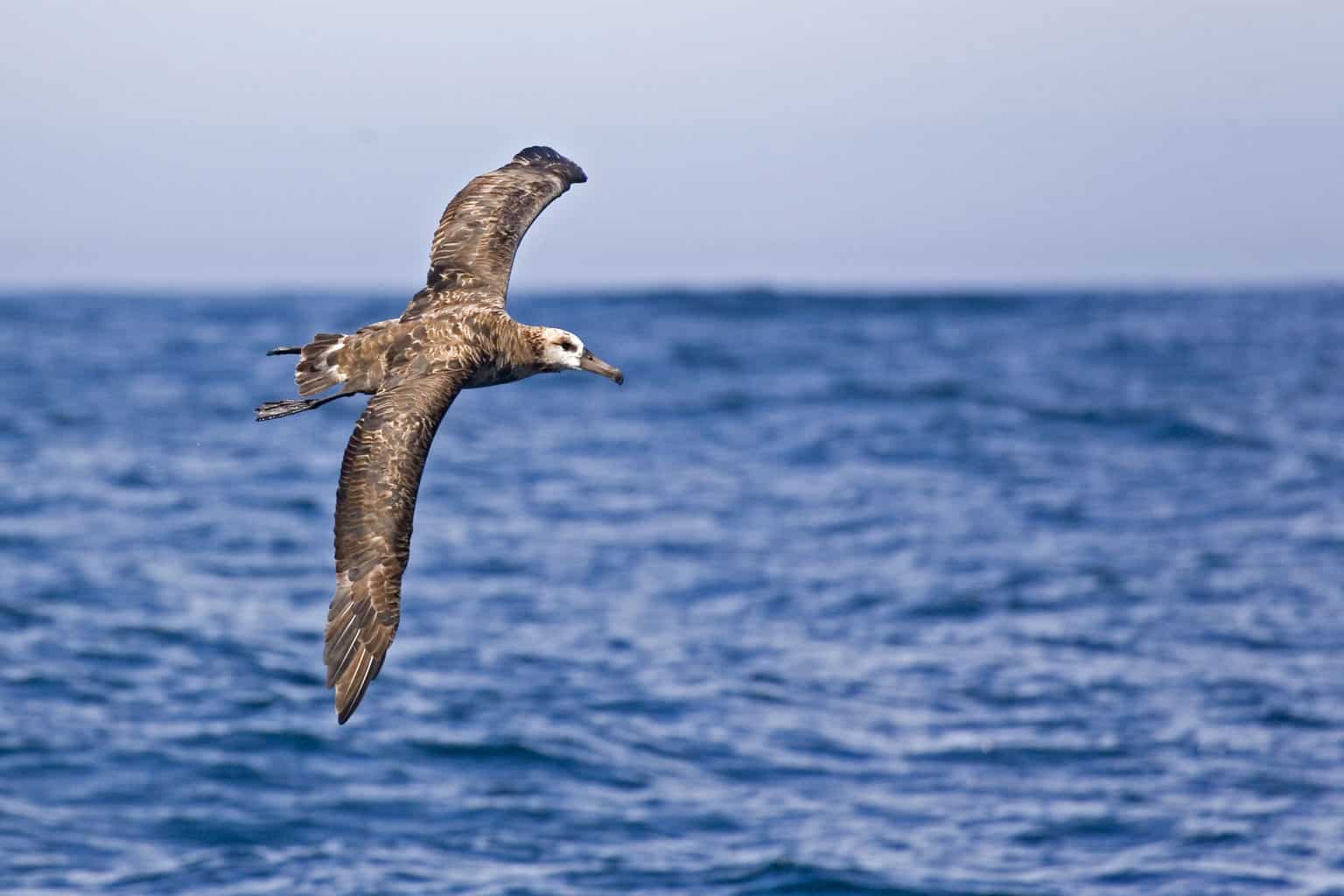
- Length: 68 – 74 centimeters (27 – 29 inches)
- Weight: 2.6 – 4.3 kilograms (5.7 – 9.5 pounds)
- Wingspan: 190 – 220 centimeters (6.2 – 7.2 feet)
Short-tailed albatross
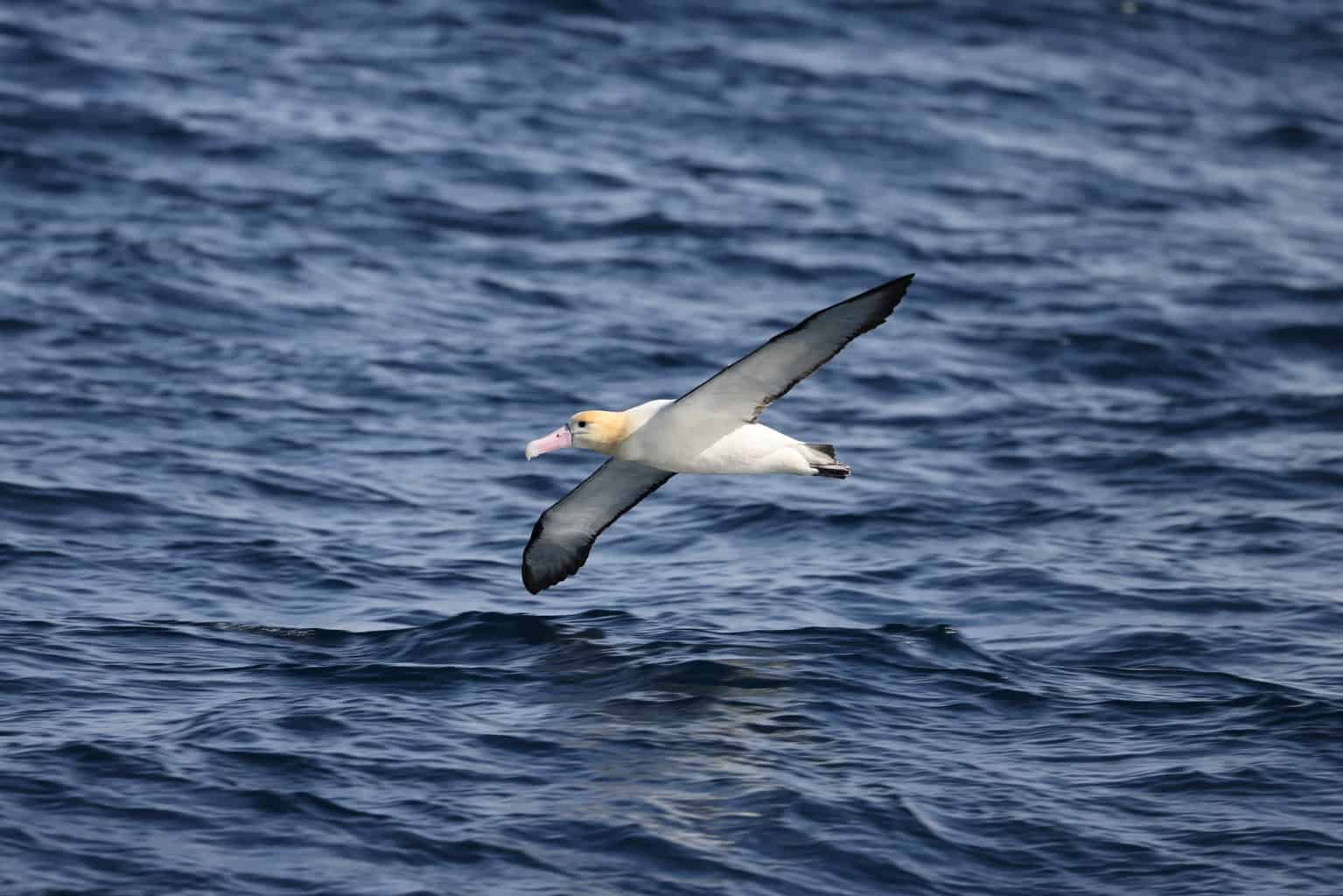
- Length: 84 – 94 centimeters (33 – 37 inches)
- Weight: 4.3 – 8.5 kilograms (9.5 – 18.7 pounds)
- Wingspan: 215 – 230 centimeters (85 – 91 inches)
These species of albatross, however, are not the largest albatrosses globally. The largest albatross is the wandering albatross, found in the Southern Seas.
Wandering Albatross
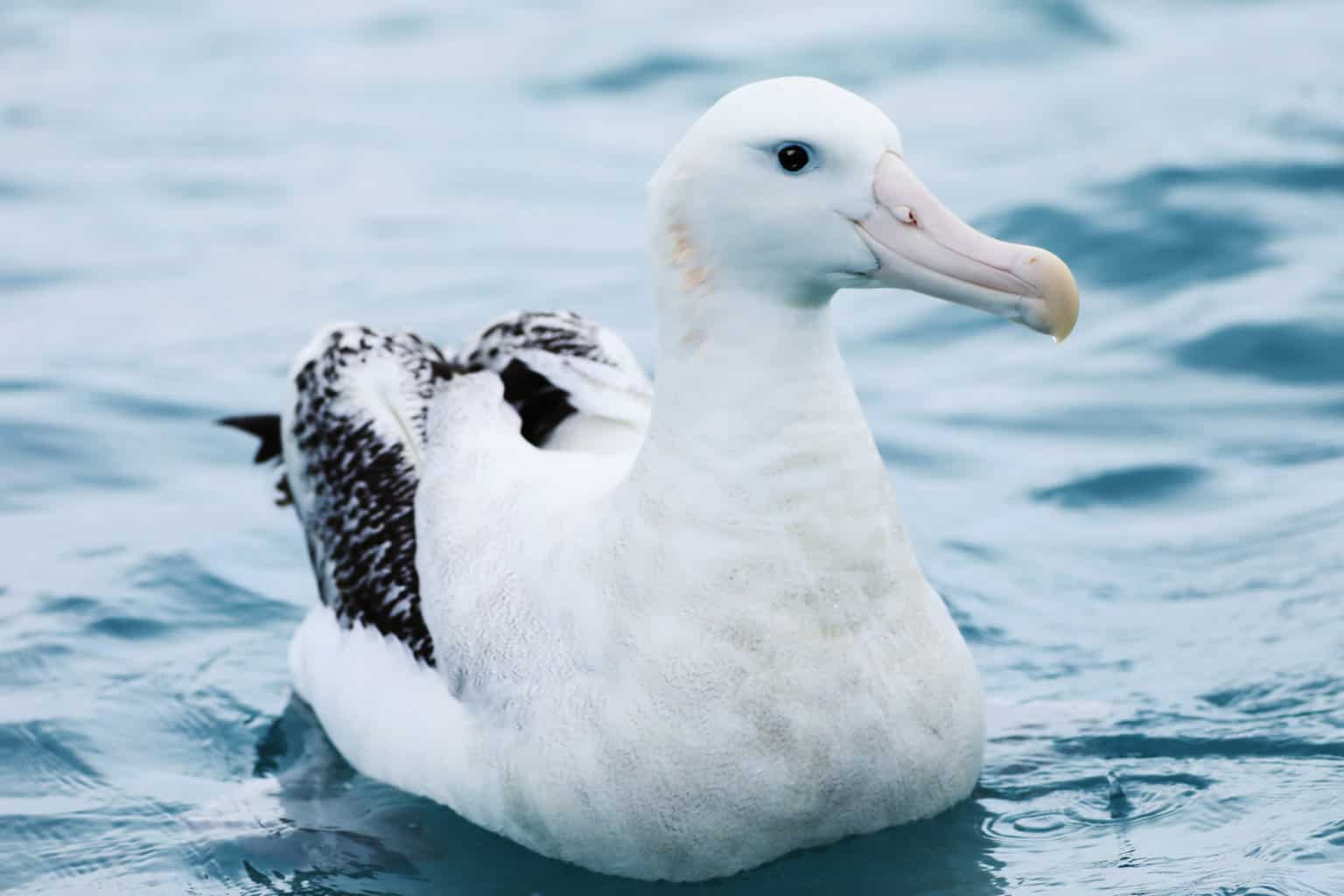
- Length: Average total length 107 – 135 centimeters (42 – 53 inches)
- Weight: Average mass 11.9 kilograms (26.2 pounds)
- Wingspan: 2.51 – 3.5 meters (99 – 138 inches)
California Condors
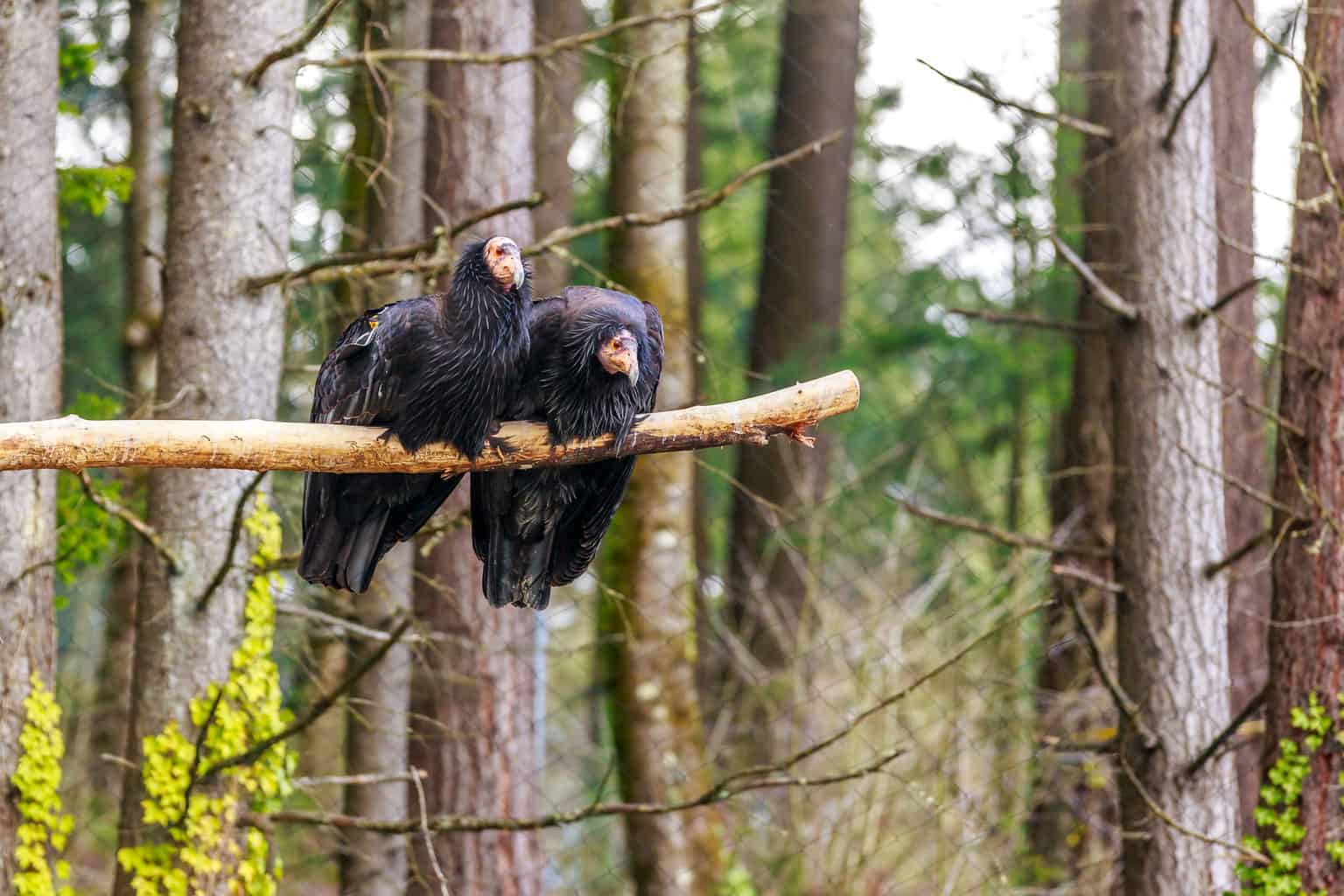
- Length: 109 – 140 centimeters (43 – 55 inches)
- Weight: 7 – 14.1 kilograms (15 – 31 pounds)
- Wingspan: 2.49 – 3 meters (98 – 118 inches)
Interestingly, unlike most other birds of prey, female condors are actually smaller than males. While this is the only condor found in the US, it has a relative with a greater wingspan in South America.
Andean Condors
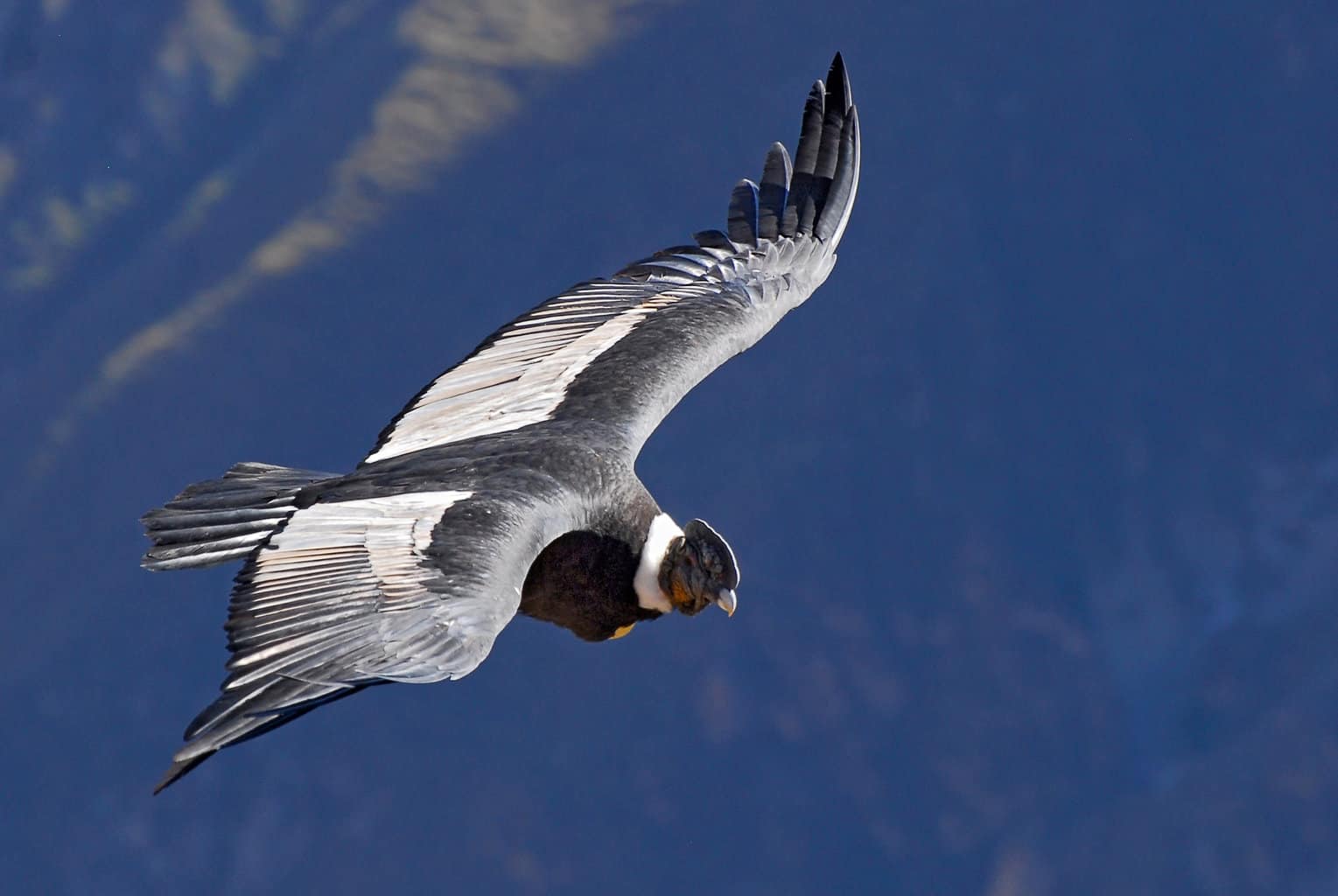
- Length: 100 – 130 cm (39 – 51 inches)
- Weight: mean weight 11.3 kilograms (25 pounds)
- Wingspan: maximum 3.3 meters (130 inches)
Is a condor bigger than an albatross?
As you can see from the above, the California condor is longer, heavier, and has a larger wingspan than any of the albatrosses that can be seen in North America.
Californian condors have the largest wingspan of any North American bird.
However, there are great albatrosses elsewhere in the world that are bigger than condors. The wandering albatross and the southern royal albatross are the largest of the albatrosses and are among the largest flying birds.
They have the largest wingspans of any bird, being up to 3.5 meters (11 feet) from tip to tip, although the average is a little over 3 meters (9.8 feet). Large adult males of these two species may exceed 11 kilograms (24 pounds) in weight, as heavy as a large swan. These albatrosses, however, range across the Southern Ocean and cannot be seen in the US.
What bird is bigger than a condor?
Though the California condor has the largest wingspan of all the birds in North America, the trumpeter swan and the introduced mute swan are both longer and heavier.
The American white pelican and the whooping crane are also longer-bodied than the Californian condor.
Globally, there are several birds larger than the condor. The wandering albatross is the bird with the largest wingspan and is the 15th heaviest bird in the world.
The Andean condor is the largest flying bird in the world by combined measurement of weight and wingspan. It has a maximum wingspan of 3.3 meters (10 feet 10 inches) and a weight of 15 kilograms (33 pounds). It is generally considered the largest bird of prey in the world, though is only the 18th heaviest.
Ostriches are the heaviest birds alive.
Among living bird species, only the great albatrosses and the two largest species of pelican exceed the Andean condor in average and maximal wingspan.

